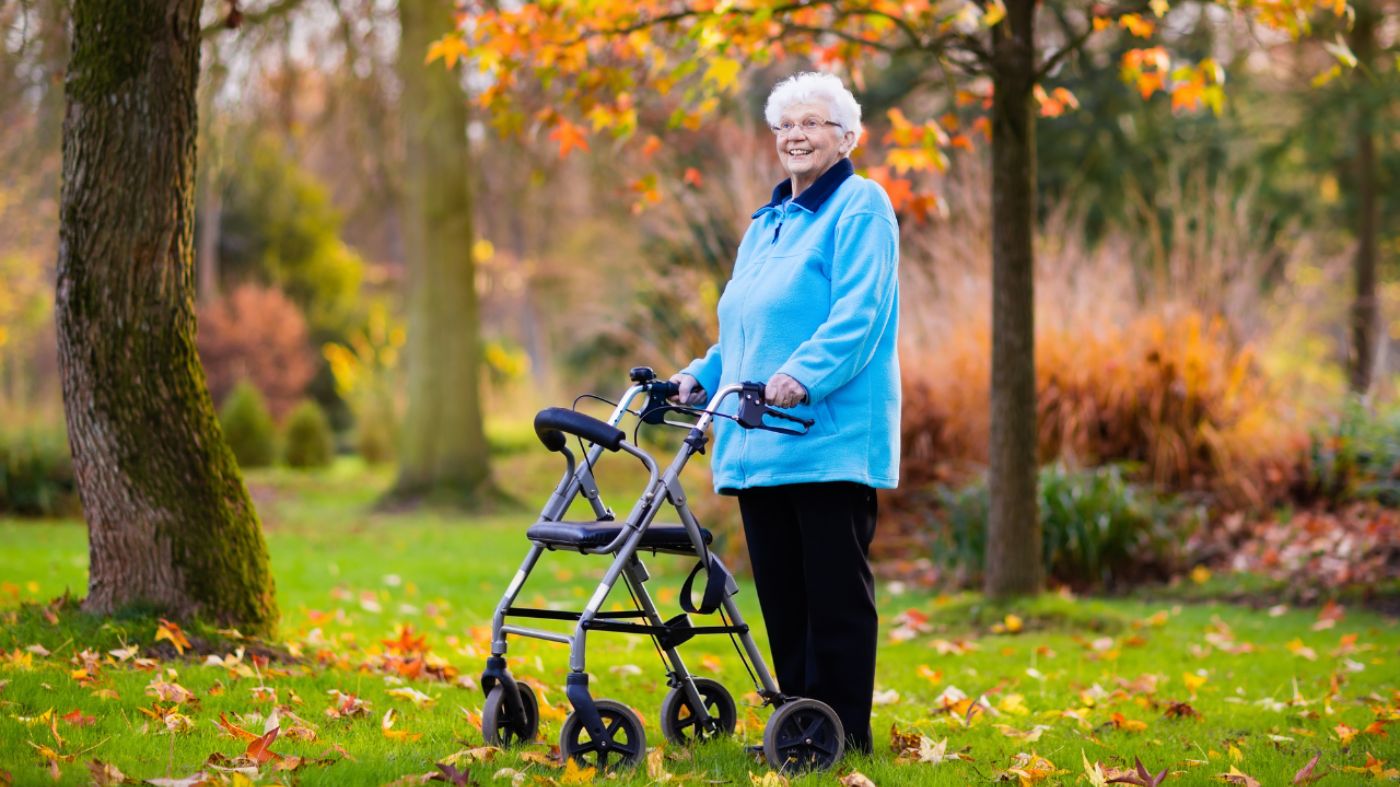
Mobility — it’s one of the most important factors to ensuring a high quality of life at any age. Many of us take for granted the ability to get around freely and easily, but it’s a vital component to one’s independence and overall health. When one’s mobility decreases, it puts them at risk for a variety of mental and physical issues, from loneliness, depression, anxiety and neurological disorders to sensory decline, decreased muscle mass, fractures, osteoporosis, arthritis, Parkinson’s disease, heart disease and peripheral vascular disease.
Mobility limitations are increasingly prevalent in older adults — affecting 35% of 70-year-olds and the majority of people over 85. This leads those who are 65+ to develop sedentary behaviors and dangerous habits that can negatively impact their health and quality of life. Here, we highlight a variety of solutions to help those with mobility issues that don’t involve moving into an assisted living or nursing facility.
After age 30, one’s muscle mass decreases 3-8% per decade. For those who are 50 and older, they can lose 10-15% of their muscle strength every year, especially if they are inactive. To combat this, it’s important for older adults to exercise at least three to four times per week. This helps them regain strength, balance and flexibility, increase circulation and heart function and prevent the body from rapid decline. For those with mobility issues, exercising can entail chair-based games, exercises and chores or water-based activities. Contact your local senior center to discover the variety of engaging opportunities available for those with physical limitations. Or, consult a professional caregiver, who can help create a personalized exercise program.
Depending on the extent of the physical limitations, older adults may benefit from the assistance of a mobility aid, such as a cane, walker, wheelchair or scooter. The goal of these tools is to maximize one’s ability to get around and engage muscles, as well as maintain safety and independence. Canes and walkers help those who can walk maintain balance and relieve pressure from their hips, knees and ankles. Mobility scooters are best for more able-bodied older adults who struggle to walk long distances. Those more severe mobility issues should consider an electric wheelchair, which requires less core strength than an electric scooter and less upper body strength than a manual wheelchair. Also consider swapping the older adult’s standard bed for an electric bed, which has adjustable positions and heights and allows for better circulation, reduced pressure sores and more effective breathing.
Less than 10% of the country’s homes are equipped to adequately accommodate the needs of older adults. Features and home modifications should be aimed to prevent falls and allow for increased mobility. This means installing handrails throughout the home and grab bars in the bathroom for added stability and applying nonslip wax and antiship treads to slick surfaces, as well as removing throw rugs and securing loose carpeting to prevent trips and slips. For increased accessibility and wheelchair use, keep hallways clean, reduce the amount of furniture in each room and avoid the use of extension cords, especially in high-traffic areas. Other home modifications that help those with mobility limitations include installing a walk-in shower, ensuring the home has proper lighting, moving light switches to 42 inches off of the floor and replacing tile or standard carpet with commercial-grade carpet that is no more than 3/8 thick.
Whether an older adult is recovering from an injury or managing a chronic health condition, home health care allows them to achieve a greater sense of independence, while at the same time relieving some of the responsibilities loved ones endure. In-home care offers flexible options depending on the type of care an individual needs, from 24/7 to several hours every day to a couple of hours a few days each week. One of the benefits of home care is that it provides a lot of flexibility depending on one’s needs, from assistance with activities of daily living (ASLs) to transportation to and from doctors’ appointments and errands. They also can provide therapy or rehabilitative services, care for chronic illnesses and help execute exercises and range-of-motion activities to help keep older adults as mobile and fit as possible.
At Upside, our mission is to elevate the quality of life for older adults. We accomplish that by selecting, curating and hand-picking apartments that have undergone extensive quality assurance and strict criteria for accessibility, geography and safety. Beyond that, we create an all-inclusive experience filled with amenities those who are 55+ need and desire, such as independence, flexibility, streamlined services and maintenance-free living.For those with mobility issues who need any extra layer of support, Upside+ is a new, revolutionary way for older adults to enjoy an elevated, independent lifestyle. This option allows members to live without the stigma or cost of traditional senior living options, as well as receive additional services tailored to their individual needs, including an on-site certified nursing assistant, care management, housekeeping, free grocery delivery and local transportation, on-site social events and two gourmet meals per day. Meet with an Upside Manager today to discover more and start your path to aging in the right place.